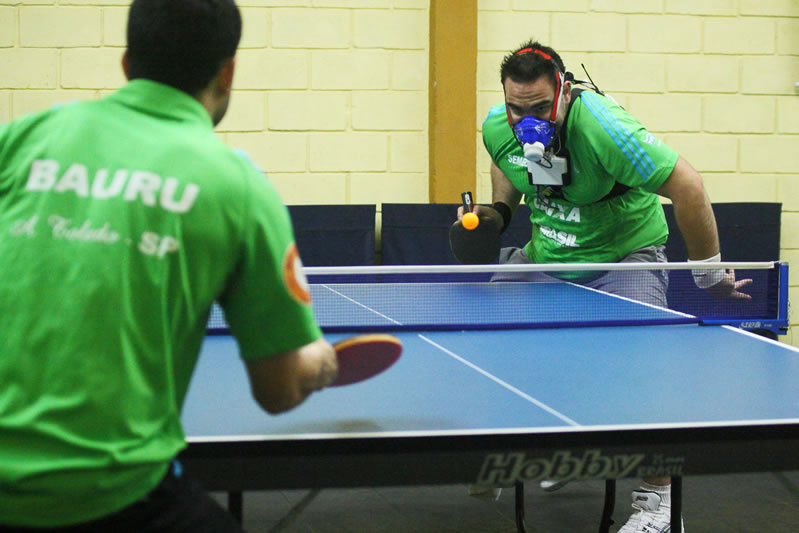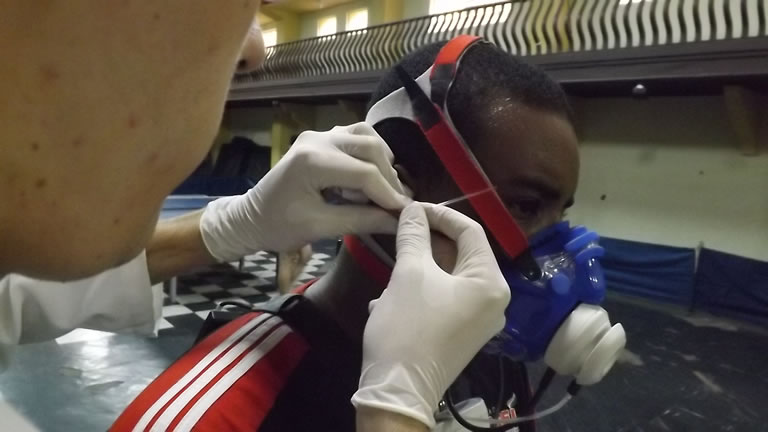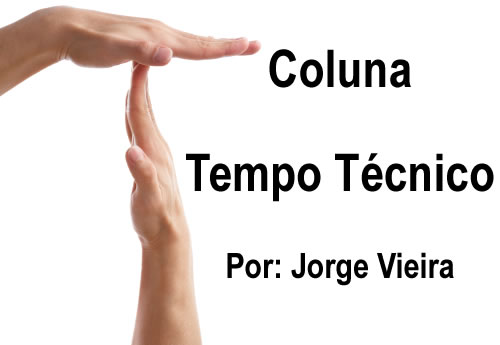Translated by André Geambastiane Moreira – [email protected]
Good morning to all table tennis players, coaches and sport lovers who enjoy temp.mesatenista.net. Following the opening of the column “Tempo Técnico” I have received messages from players who offered to help me translate the column to English and have also given me great suggestions for the next few weeks. It is really good to know that we will have people from different parts of Brazil helping us.
As I mentioned in the opening column, today I decided to start with the explanation of my masters project, which I have been executing under the supervision of Professor PhD Alessandro Zagatto. It is a project divided in some studies: a) video analysis from players who perform in olympic and world level; b) evaluation of the aerobic/anaerobic fitness of table tennis players by using conventional and specific protocols; c) analysis of the energetic contributions of the aerobic/anaerobic metabolisms in a table tennis match, being the last analysis the focus for debate in today´s column.
Basically, this analysis will enable us to estimate percentually what is the energetic contribution of each metabolism in a table tennis match. In other words, it means that we shall understand a little more about how the body produces energy to play table tennis, which gives table tennis coaches and fitness coaches some benefits which we will go through later on. In order to achieve these studies, we asked some male players between 18 and 30 years old to play matches (best of seven games) using a portable gas analyser (Picture 1), equipment that allowed the athletes to play freely without movements obstruction. This equipment enables to estimate percentually the energetic contribution of two metabolisms (aerobic and the phosphagenic energy source) using the oxygen uptake measured between and after the match. Besides, there has also been some blood sampling from the ear lobe (Picture 2) to calculate the contributions from the anaerobic glycolysis system using the measurement of the blood lactate. As these data collection have been very recent (June and July 2013) it is still not possible to calculate the individual energetic contribution from the metabolisms in the investigated matches.
 |
|
Figura 1. Mesatenista Claudio Massad utilizando o analisador de gases portátil enquanto joga uma partida contra o mesatenista Adilson Toledo (crédito da foto para o Marcelo Shishito)
|
 |
| Figura 2. Coleta de sangue do lóbulo da orelha do mesatenista Jeferson Bento. |
However, to understand more about this matter before our results are published by papers, it is important to mention the paper published by the Brazilian researchers Zagatto, Morel and Gobatto in 2010 at the Journal of Strength and Conditioning Research, named “Physiological Responses and Characteristics of Table Tennis Matches Determined in Official Tournaments”, where the authors investigated the physiological responses (lactate and heart rate) and the timing structure (average duration of the rally, effort and pause ratio and other variables) in official table tennis matches. From the results, the authors suggested that the phosphagenic energy source (ATP-PCr) was the main metabolism in the production of energy only when there was effort involved (points/rallies), as the aerobic system helped in the athletes recovering during the pauses between points and sets, being responsible for the majority of the energetic contribution when considering the full amount of time of the matches. The difference about the project that we are currently executing for the study published by Zagatto, Morel and Gobatto is based in a most precise determination (in percentual amounts and other units of measurement) of the energetic contribution of each metabolism, which will be possible due to the measurement of the oxygen uptake during the table tennis matches and also the lactate measurement.
It is also important to notice that there have been some studies to investigate the bioenergetic/physiologic characteristics in other racket sports, such as squash (where the world number one and world Champion was a volunteer as were other two top 50 athletes), tennis and badminton (where 11 international players were evaluated). There are also studies that investigated bioenergetic aspects in rowing, karate (international level) and indoor rock climbing. From these studies it is possible to realize that the investigation of bioenergetic characteristics is a current matter in the high level sports, as some of the best athletes volunteered for research that have certainly benefited the development of these sports all over the world, also helping the own athletes who volunteered and coaches in the world who learned about the research. So, what are the main reasons to investigate the contribution of the energetic metabolisms in table tennis ?
First of all, the lack of studies in this area is one of the main points, because we weren´t able to find scientific papers that mention anything about the individual contribution of each metabolism in a table tennis match. Secondly, the coaches and fitness coaches who are familiar with the bioenergetics characteristics of a particular sport are able to prepare more effective technical and physical training. There are sports where the bioenergetics factor is essential for the performance, as most of the sessions in an annual planning are made by respecting the energetic characteristics of that particular sport. As for table tennis, the performance is influenced by many factors (technical, tactical, physical, psychological, etc.) and not only by the bioenergetic aspect. However, it is known that in a lot of situations, the training prescription in table tennis is empirical, made based on the experience of the coaches and former athletes. That is why the bioenergetic description of our sport shall give more support to the coaches and fitness coaches in the prescription of the training sessions that aim to reproduce the match environment in a more realistic way because making the player practice in situations as close to the real physiologic demand of a match would be a very interesting strategy that could bring many benefits for his development.
So, to conclude the matter we discussed today I would like to start a debate with you in these next few days. You may comment on the space below. When, during the year, should there be the training sessions that aim to simulate the conditions of an official match? What are the factors that a coach is able to manipulate in order to make the training session similar to an official match? How have the players in your club been preparing physically during the year? I have noticed that most coaches try these sessions that simulates competition as the most important events get closer and I actually agree with such strategy. However, are they able to reproduce the physiological aspects and situations in these training sessions so they look like an official match?
In order to conclude today´s column, I would like to invite any coach who has male athletes, between 18 -30 years old, that are currently competing and belong to CBTM´s rating A, B or C, or even who can play at the same level of such players to take part in this project as a volunteer. Please contact me ASAP ([email protected]).
Next time I will be writing about the time analysis of a table tennis match (conection between effort and pause and other variables) and how I believe that such information can be used in the prescription of specific training for table tennis.
Translated by André Geambastiane Moreira – [email protected]

